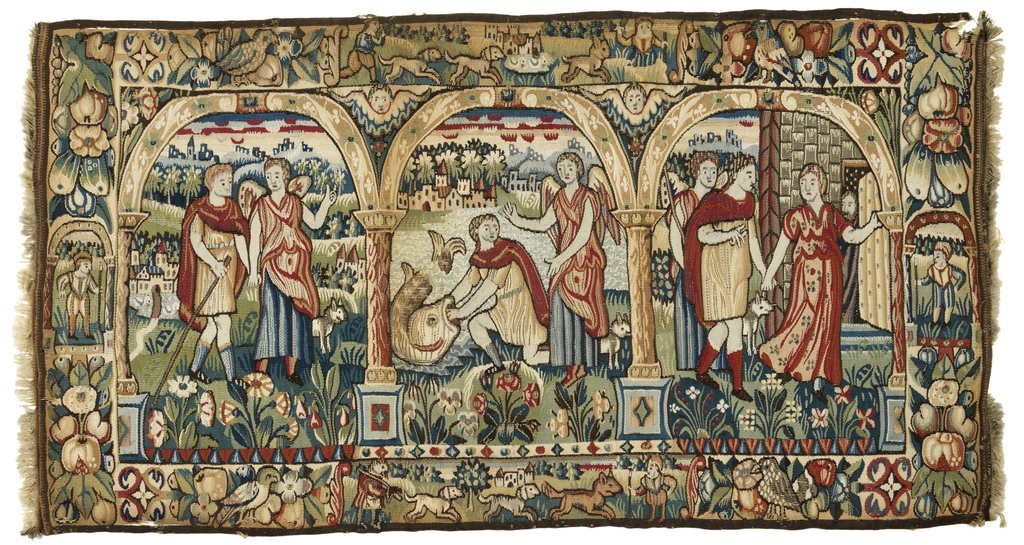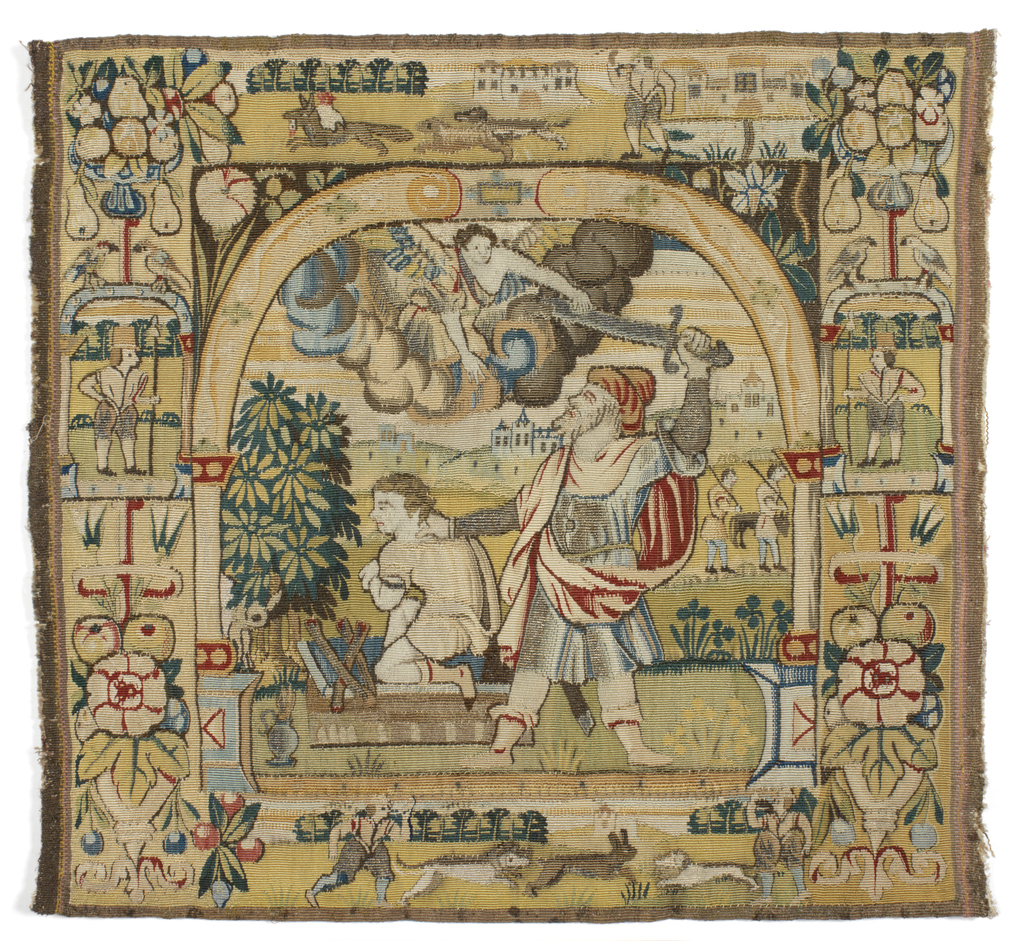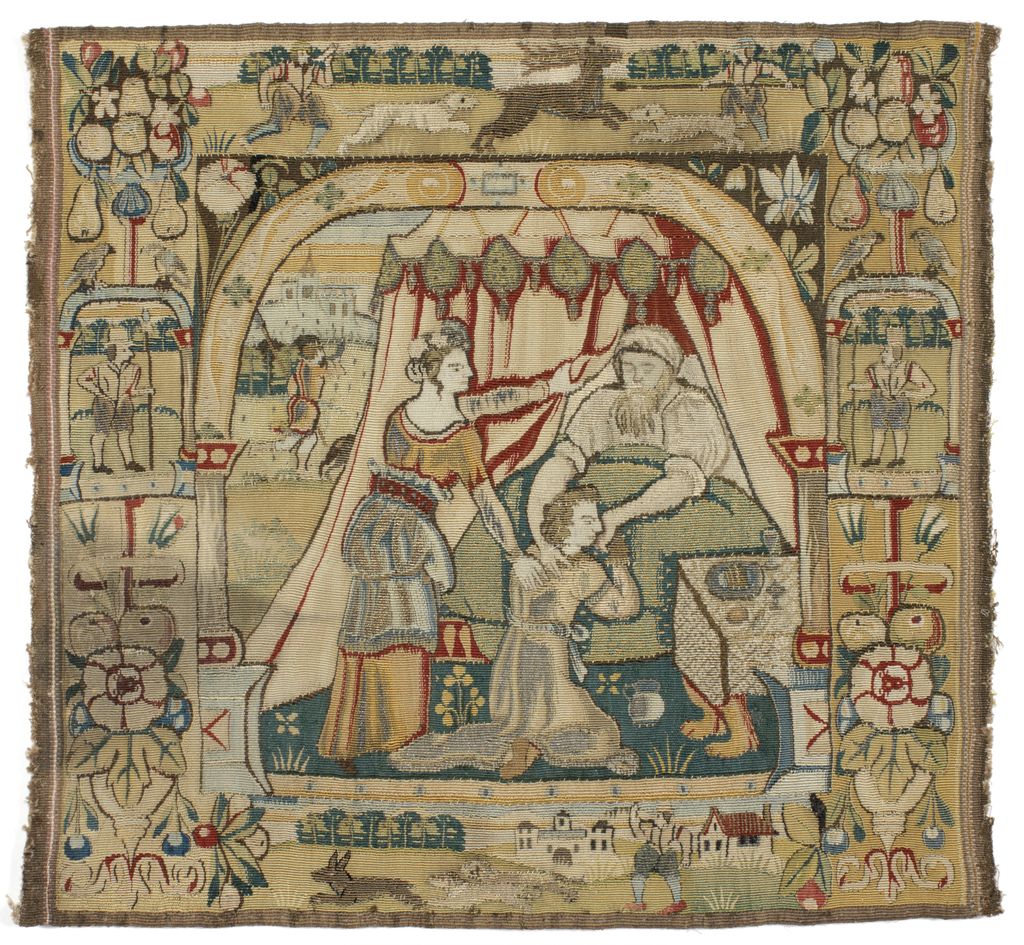Dr Louis Clarke presented four small late sixteenth-century tapestry items to the Fitzwilliam Museum, Cambridge where he was formerly director. Three are furnishing items probably once part of a set of six cushions showing a narrative story. A long cushion cover presents three scenes from the story of Tobias and the Angel [1]; two square pieces are from a set depicting the Life of Isaac, one showing an unusual arrangement of Isaac blessing Jacob[2].
The fourth piece is a small purse or sweet bag[3]. At the time of their acquisition all were classified as ‘Sheldon’ products, meaning that it was thought they were woven at Barcheston, Warwickshire by weavers its owner, William Sheldon, hoped to attract there - hence the name. Although these tapestries add in several ways to our knowledge about those supposed products - three of the scenes here have not previously been known - they also raise again questions about the validity of the appellation conferred only in the 1920s without any support from direct evidence.

Scenes from the story of Tobias, T.1-1953
© Fitzwilliam Museum, Cambridge
 Abraham about to strike Isaac, T.7a-1961
Abraham about to strike Isaac, T.7a-1961
© Fitzwilliam Museum Cambridge

Isaac blesses Jacob, T.7b-1961
© Fitzwilliam Museum, Cambridge
All three of the cushion covers share features less commonly known from the other 121 examples classified as Sheldon. All contain gold or silver thread; all have the original galloon; all show a halberdier in the vertical borders rather than a female figure. Two have the arch worked in yellow rather than red thread.
The purpose of this study is both to examine the pieces and to consider their contribution to the range of small tapestry items found all over Western Europe whose provenance is hard to identify and whose date is elusive.
- Museum accession T.1-1953.
- Museum accession T.7a-1961, T.7b-1961.
- Museum accession T.8-1961.




